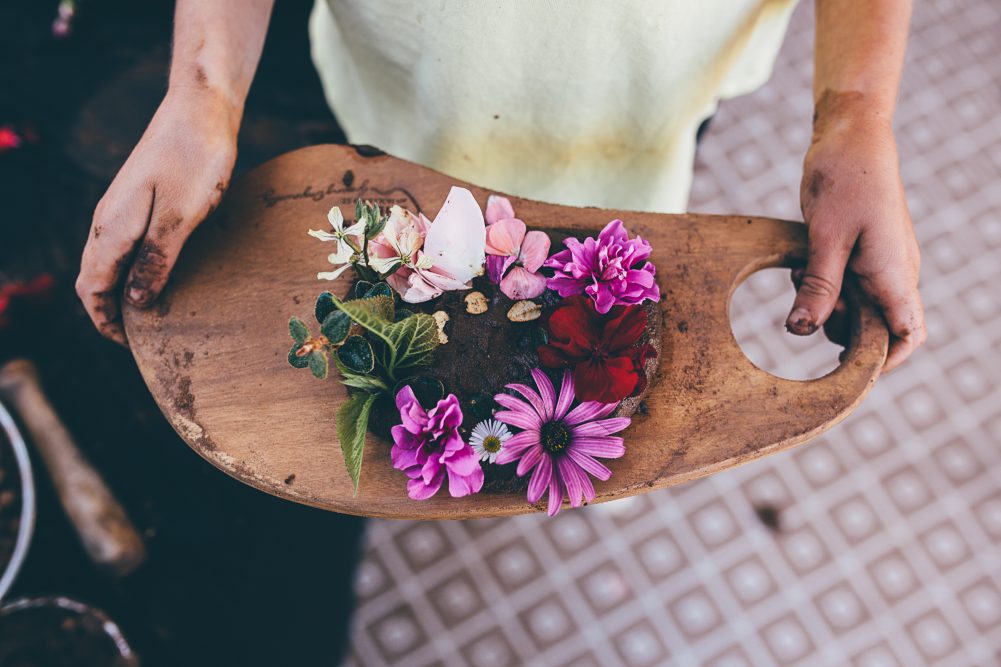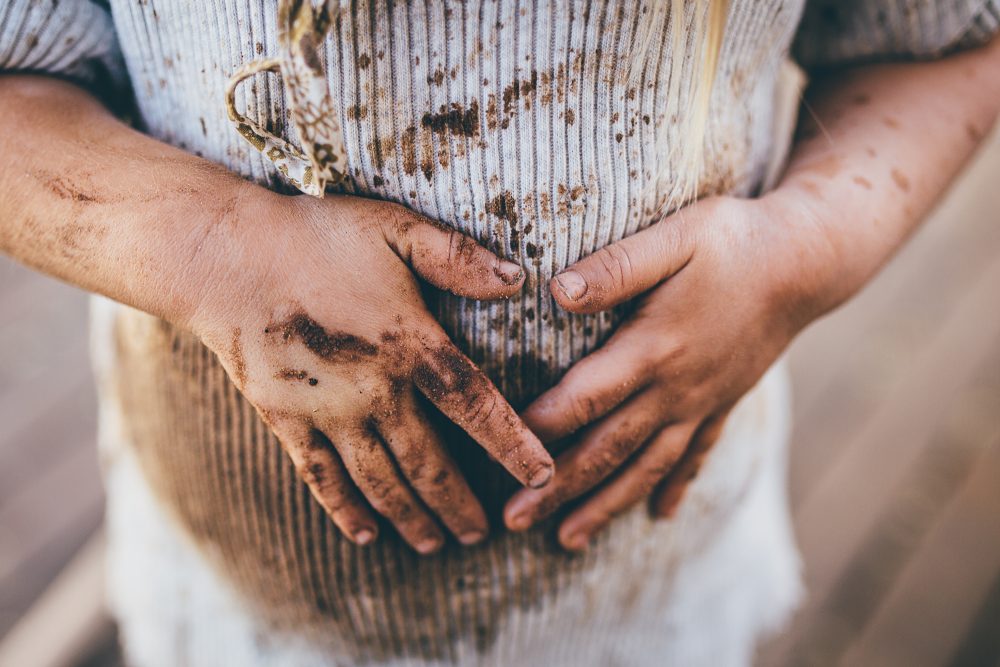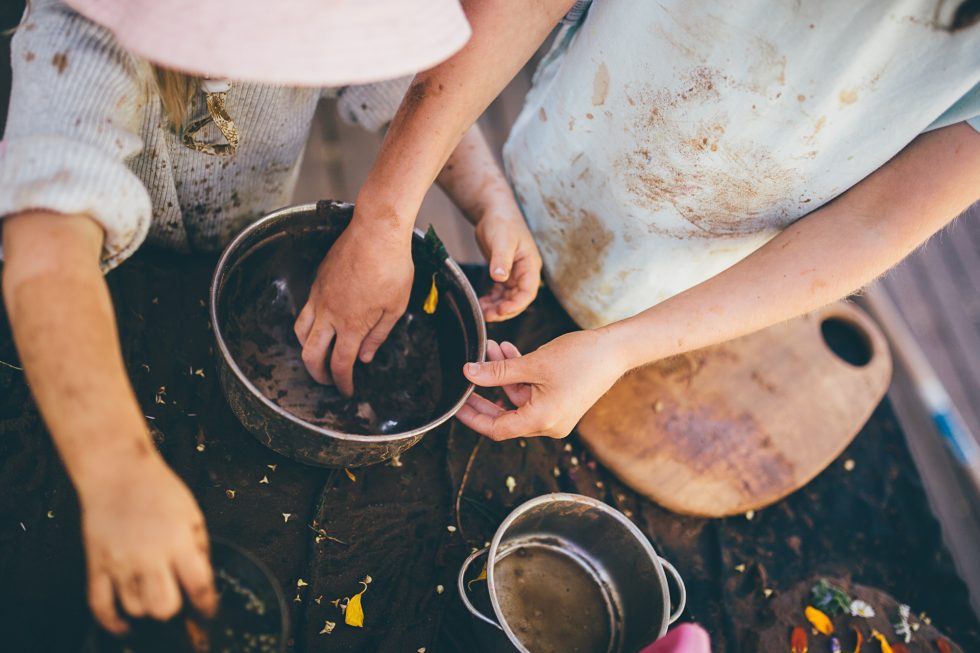Words and images: Jason Tyndall, Nature Play SA
As parents, it’s our role to nurture childhood, to provide the space for our children to be curious, creative and courageous. There are few things more rewarding than seeing your child develop their sense of self, witnessing them find their place in the world and cultivating their understanding of their own impact, abilities and strengths. While tinkering with pots, pans, spoons, tools, flowers and dirt may seem like little more than a recipe for a pile of washing and good scrub in the bath, it’s so much more than mess.

Backyard tinkering immerses the senses, enriches developing minds and has ongoing benefits for health and wellbeing. As one of the most engaging play styles children can participate in, backyard tinkering encourages experimentation, imagination and resourcefulness. Mud pies, magic potions, soups and stews are but a few of the things children can invent, with boundless stories attached to their creations. And the best part is, assembling a functional, educational and fun space in your backyard is easier than you may think.
Even the smallest yard can accommodate a tinkering workspace, and the steps to make it happen are simple and enjoyable activities that children can get involved with – a neighbourhood walk, a trip to the op shop or a natural treasure hunt. You’ll be wishing you were a child again. But, it’s important to take a step back. It’s the freedom to move, construct and control the space that makes it so valuable. Nothing should be off limits.

Here’s how to make it happen.
- Choose a space in your yard that is safe for children to use as they wish. Remember to consider things such as shade, mess and hazards – it’s important they can play uninterrupted and have the freedom to move through the space with full control to modify it as they want to.
- Prepare a workspace at an appropriate height, for example a table or outdoor mud kitchen, keeping in mind it will get dirty.
- Collect suitably sized pots, pans, mixing bowls and utensils, such as a ladle, potato masher and sieve/colander. Muffin tins are also a great inclusion. A visit to your local op shop can be a fun way to get the collection together. The items should be accessible from the workspace.
- Provide water in an appropriate vessel, for example in a small watering can. Older children can be shown how to safely collect water from the tap, if you’re happy for them to do so.
- Ensure there is freely available dirt. If you have a preference for where children can dig, identify it for them, or collect some soil in a bucket/bowl and place it at the workspace.
- Gather different shaped leaves, twigs and seed pods such as pines cones, sheoak cones, banksia cones or large gumnuts and include at the workstation (use your judgement with regard to size and the age of your child).
- Identify with your child which plants they can pick flowers from, or if you’re concerned about damage to plants, or toxicity, cut some yourself and place them at the workspace. Alternatively, you can go for a neighbourhood walk to collect flowers*. Edible flowers such as Nasturtium (Tropaeolum majus), Native Violet (Viola hederacea) and French Marigold (Tagetes patula) are ideal or herbs are a great non-toxic option, such as Rosemary, Basil, Mint and Coriander.
- Introduce the space to your lucky nature players, step back and let them take the lead. While you may want to join in the fun, we recommend supervising from a distance, and waiting to be invited, as sustained independent play is what brings about the many benefits of backyard tinkering.
* Before picking any plants for use by children, it’s important to research the plants you intend to use to determine safety, sensitivity and toxicity
For more ideas and inspiration:






